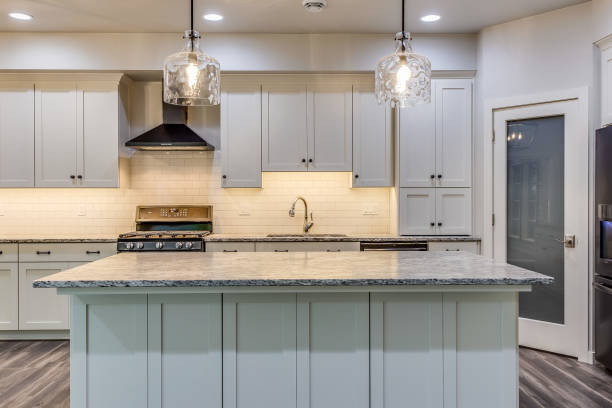Kitchen islands have become a popular feature in modern kitchens, offering both style and functionality. These freestanding units can serve as a focal point in the room, providing additional counter space, storage, and seating options. However, like any home improvement project, there are pros and cons to consider before making the investment.
One of the biggest advantages of having a kitchen island is the extra workspace it provides. Whether you need more room for meal prep or just want a place to set down groceries while unloading bags, an island can make your kitchen more efficient. This added counter space can also be useful for setting up a buffet during parties or gatherings.
In addition to extra workspace, kitchen remodeling contractor arlington heights islands often come with built-in storage options. From drawers and cabinets to open shelves and wine racks, there are plenty of ways to keep your kitchen organized with an island. This can help reduce clutter on your countertops and make it easier to find what you need while cooking.
Another benefit of having a kitchen island is that it can double as a dining area. Many islands are designed with overhangs that allow for barstool seating, creating a casual spot for meals or snacks. This can be especially useful for small kitchens where space is limited but you still want to have an eat-in option.
Despite these advantages, there are some drawbacks to consider when deciding whether or not to invest in a kitchen island. One potential downside is the cost involved in purchasing and installing one. Depending on the size and materials used, islands can range from several hundred dollars to several thousand dollars.
Another consideration is the amount of floor space required for an island. While they can be beneficial in terms of functionality, islands also take up valuable square footage in your kitchen. If your space is already tight or if adding an island would disrupt traffic flow, it may not be worth the investment.
Additionally, some homeowners find that they don’t use their kitchen islands as much as they had anticipated. If you already have ample counter space and storage options in your kitchen, adding an island may not provide enough added value to justify the expense.
In conclusion, there are both pros and cons to consider when deciding whether or not to invest in a kitchen island. While they offer additional workspace, storage options, and dining areas, they also come with costs and spatial considerations that may not make them worth it for every homeowner. Ultimately, it’s important to weigh these factors carefully before making any decisions about incorporating an island into your kitchen design plan.
RBD Renovation
949 W Essex Pl, Arlington Heights, Illinois, 60004
312-300-2202















